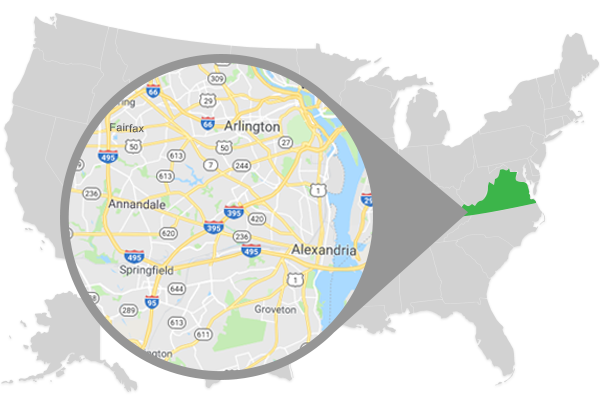FAMILY LEPTOTYPHLOPIDAE (SLENDER BLIND SNAKES)
This family of snakes is composed of 50 species in two families. They are generally regarded as the most primitive snakes, having a pelvic girdle and vestigial hind limbs. They have a single lung and oviduct and are well adapted to their burrowing lifestyle. They feed exclusively on small invertebrates such as ant and termite larvae. Leptotyphlopids are oviparous. There are two species of this family in North America.
| Leptotyphlops Dulcis | Texas Blind Snake | |
| Leptotyphlops humilis | Western Blind Snake |
FAMILY BOIDAE (BOAS AND PYTHONS)
Boidae is a large family of snakes that includes all five of the world’s giant snakes. Boids are an ancient family that is characterized by a mixture of modern and primitive traits. They have flexible jaws found in more advanced families but also retain a pelvic girdle, vestigial hind limbs, and many uses both lungs. While there are close to one hundred species of Boids worldwide, there are only two species of boas found in North America, both in the sub-family Eryciniae.
| Charina bottae | Rubber Boa | |
| Lichanura trivirgata | Rosy Boa |
COLUBRIDAE (COLUBRID SNAKES)
The Colubrid snakes are sometimes referred to as “typical snakes.” They comprise the largest family by far with over 2000 species worldwide. Most are medium-sized snakes, and all lack a pelvic girdle and have no vestigial hind limbs and whose left lung is either absent or greatly reduced. Most species are considered members of two large subfamilies, Colubrinae and Natricinae which are distinguished by the presence (Natricinae) or absence (Colubrinae) of spines on the lumbar vertebrae. Both subfamilies contain over 200 genera. The Colubrinae subfamily includes two of the general popular with Herpetoculturists, Elaphe, and Lampropeltis. The Natricinae subfamily includes water snakes (Nerodia) and garter snakes (Thamnophis) among others. With a family this large, there will always be disagreements about classification, especially regarding the numbers and types of subspecies. This list includes 102 species of Colubrid snakes found in North America. Subspecies are not included in this scheme. Other lists may vary.
| Arizona elegans | Glossy Snake | |
| Bogertophis Rosaliae | Baja California Rat Snake | |
| Bogertophis Subocularis | Trans-Pecos Rat Snake | |
| Carphophis amoenus | Worm Snake | |
| Cemophora Coccinea | Scarlet Snake | |
| Chilomeniscus cinctus | Banded Sand Snake | |
| Chionactis occipitalis | Western Shovelnose Snake | |
| Chionactis Palarostris | Sonoran Shovelnose Snake | |
| Clonophis Kirtlandii | Kirtland’s Snake | |
| Coluber constrictor | Racer | |
| Coniophanes Imperialis | Black-striped Snake | |
| Contia tenuis | Sharptail Snake | |
| Diadophis Punctatus | Ringneck Snake | |
| Drymarchon corais | Indigo Snake | |
| Drymobius Margaritiferus | Speckled Racer | |
| Elaphe Bairdii | Baird’s Rat Snake | |
| Elaphe Emoryi | Emory’s Rat Snake | |
| Elaphe guttata | Corn Snake | |
| Elaphe obsoleta | Common Rat Snake | |
| Elaphe Slowinskii | Slowinski’s Corn Snake | |
| Elaphe Vulpina | Fox Snake | |
| Farancia Abacura | Mud Snake | |
| Farancia Erytrogramma | Rainbow Snake | |
| Ficimia Streckeri | Mexican Hooknose Snake | |
| Gyalopion Canum | Western Hooknose Snake | |
| Gyalopion Quadrangulare | Desert Hooknose Snake | |
| Heterodon Nasicus | Western Hognose Snake | |
| Heterodon Platirhinos | Eastern Hognose Snake | Picture 2 | |
| Heterodon Simus | Southern Hognose Snake | |
| Hypsiglena torquata | Night Snake | |
| Lampropeltis | Kingsnake species and sub-species | |
| Lampropeltis Alterna | Gray-banded Kingsnake | |
| Lampropeltis Calligaster | Prairie Kingsnake | |
| Lampropeltis Getula | Common Kingsnake | |
| Lampropeltis Pyromelana | Sonora Mountain Kingsnake | |
| Lampropeltis triangulum | Milk Snake | |
| Lampropeltis Zonata | California Mountain Kingsnake | |
| Leptodeira Septentrionalis | Cat-eyed Snake | |
| Masticophis bilineatus | Sonoran Whipsnake | |
| Masticophis flagellum | Coachwhip | |
| Masticophis lateralis | Striped Racer | |
| Masticophis Taeniatus | Striped Whipsnake | |
| Nerodia Clarkii | Salt Marsh Snake | |
| Nerodia Cyclopion | Mississippi Green Water Snake | |
| Nerodia Erythrogaster | Plainbelly Water Snake | |
| Nerodia Fasciata | Southern Water Snake | |
| Nerodia Floridana | Florida Green Water Snake | |
| Nerodia Harteri | Brazos Water Snake | |
| Nerodia Paucimaculata | Concho Water Snake | |
| Nerodia Rhombifer | Diamondback Water Snake | |
| Nerodia sipedon | Nothern Water Snake | |
| Nerodia Taxispilota | Brown Water Snake | |
| Opheodrys aestivus | Rough Green Snake | |
| Opheodrys vernalis | Smooth Green Snake | |
| Oxybelis Aeneus | Mexican Vine Snake | |
| Phyllorhynchus Bbrowni | Saddle Leafnose Snake | |
| Phyllorhynchus Decurtatus | Spotted Leafnose Snake | |
| Pituophis Catenifer | Gopher Snake | |
| Pituophis melanoleucus | PineSnake | |
| Regina Alleni | Striped Crayfish Snake | |
| Regina Grahamii | Graham’s Crayfish Snake | |
| Regina Rigida | Glossy Crayfish Snake | |
| Regina Septemvittata | Queen Snake | |
| Rhadinaea Flavilata | Pine Woods Snake | |
| Rhinocheilus Lecontei | Longnose Snake | |
| Salvadora Derserticola | Big Bend Patchnose Snake | |
| Salvadora Grahamiae | Mountain Patchnose Snake | |
| Salvadora Hexalepis | Western Patchnose Snake | |
| Seminatrix Pygaea | Black Swamp Snake | |
| Senticolis Triaspis | Green Rat Snake | |
| Sonora semiannulata | Ground Snake | |
| Stilosoma Extenuatum | Short-tailed Snake | |
| Storeria Dekayi | Brown Snake | |
| Storeria Pccipitomaculata | Redbelly Snake | |
| Tantilla Atriceps | Mexican Blackhead Snake | |
| Tantilla Coronata | Southeastern Crowned Snake | |
| Tantilla Gracilis | Flathead Snake | |
| Tantilla Hobartsmithi | Southwestern Blackhead Snake | |
| Tantilla Nigriceps | Plains Blackhead Snake | |
| Tantilla Oolitica | Rim Rock Crowned Snake | |
| Tantilla Planiceps | Western Blackhead Snake | |
| Tantilla Relicta | Florida Crowned Snake | |
| Tantilla Rubra | Big Bend Blackhead Snake | |
| Tantilla Wilcoxi | Chihuahuan Blackhead Snake | |
| Tantilla Yaquia | Yaqui Blackhead Snake | |
| Thamnophis Atratus | Santa Cruz Garter Snake | |
| Thamnophis Brachystoma | Shorthead Garter Snake | |
| Thamnophis Butleri | Butler’s Garter Snake | |
| Thamnophis Couchi | Western Aquatic Garter Snake | |
| Thamnophis Cyrtopsis | Blackneck Garter Snake | |
| Thamnophis Elegans | Western Terrestrial Garter Snake | |
| Thamnophis Eques | Mexican Garter Snake | |
| Thamnophis Gigas | Giant Garter Snake | |
| Thamnophis Marcianus | Checkered Garter Snake | |
| Thamnophis Ordinoides | Northwestern Garter Snake | |
| Thamnophis Proximus | Western Ribbon Snake | |
| Thamnophis Radix | Plains Garter Snake | |
| Thamnophis Rufipunctatus | Narrowhead Garter Snake | |
| Thamnophis Sauritus | Eastern Ribbon Snake | |
| Thamnophis Sirtalis | Common Garter Snake | |
| Trimorphodon Biscutatus | Lyre Snake | |
| Tropidoclonion Lineatum | Lined Snake | |
| Virginia Striatula | Rough Earth Snake | |
| Virginia Valeriae | Smooth Earth Snake |
ELAPIDAE (COBRAS AND CORAL SNAKES)
Venomous
The cobra family is thought to have evolved from Colubrid snakes and many appear very similar in appearance with long, slender bodies and large scales (plates) on the head. They differ in having more advanced venom delivery systems than the venomous Colubrids. Elapids have fangs that are “effectively tubular” in that the fangs contain grooves that are enclosed by an unfolding of the edges. The fangs are in the front of the mouth rather than the rear as is seen in venomous Colubrids. The Elapidae contains some of the world’s most dangerous snakes including cobras (Naja), mambas (Dendroaspis) and sea snakes (Hydophinae and Laticaudinae). Elapids are found worldwide and in Ausralia are the predominant family. In North America, three species of elapids are found, two species of coral snakes and one sea snake. The coral snakes are relatively small snakes that spend most of their time underground. Their primary food is other snakes. Despite their small size and small fangs, their venom is extremely toxic.
| Micruroides Euryxanthus | Western Coral Snake | |
| Micrurus Fulvius | Eastern Coral Snake | |
| Pelamis Platurus | Yellowbelly Sea Snake |
VIPERIDAE (VIPERS)
Venomous
The vipers are generally considered to be the most advanced family of snakes since they possess a very sophisticated venom delivery system. Large tubular fangs are placed in the front of the mouth and they are hinged, allowing them to be folded back when not in use. Their heads are covered with numerous small scales and their eyes have vertically elliptical pupils. All the vipers found in North America are in the subfamily of pit vipers (Crotalinae) having a pair of heat-sensing pits located between each eye and nostril. The rattlesnakes are a truly American family of pit vipers since they are not found in the Old World and all but two species are found in the U.S. or Mexico. They are divided into two genera based on their head scales. Members of the genus Crotalus have numerous small scales on their heads while members of the genus Sistrurus have large scales (plates) on their heads.
| Agkistrodon Contortrix | Copperhead | |
| Agkistrodon Piscivorus | Cottonmouth | |
| Crotalus Adamanteus | Eastern Diamondback Rattlesnake | |
| Crotalus Atrox | Western Diamondback Rattlesnake | |
| Crotalus Cerastes | Sidewinder | |
| Crotalus Enyo | Lower California rattlesnake | |
| Crotalus Horridus | Timber Rattlesnake | |
| Crotalus Lepidus | Rock Rattlesnake | |
| Crotalus Mitchellii | Speckled Rattlesnake | |
| Crotalus Molossus | Blacktail Rattlesnake | |
| Crotalus Pricei | Twin-spotted Rattlesnake | |
| Crotalus Ruber | Red Diamond Rattlesnake | |
| Crotalus Scutulatus | Mojave Rattlesnake | |
| Crotalus Tigris | Tiger Rattlesnake | |
| Crotalus Viridis | Western Rattlesnake | |
| Crotalus Willardi | Ridgenose Rattlesnake | |
| Sistrurus Catenatus | Massasauga | |
| Sistrurus Mmiliarius | Pigmy Rattlesnake |
Scientific and common names from J T Collins, Standard common and current scientific names for North American amphibians and reptiles, Third Edition, Soc Study Amph & Rept Herp Circular No , Order of families from J L Behler and F W King, The Audubon Society Field Guide to North American Reptiles and Amphibians, Alfred A Knopf,
Compiled for Slater Museum of Natural History, University of Puget Sound, Tacoma, WA, by Doug Henderson and Dennis Paulson, October, 1995
More information on snakes
- Whats the difference between Lampropeltis and Elaphe?
- Lampropeltis Information
- More Snake Pictures
- Corn Snakes Genetics
Snake identification
Please do not email me asking for help identifying your snake.
I just don’t have the time to answer all the emails this site generates. Sorry.Here’s my advice though. Don’t kill it! Leave it alone and it will leave you alone.If you really do want to identify a snake, get a field guide at the library or bookstore. These will have information on the geographic ranges and that will allow you to narrow your search.




